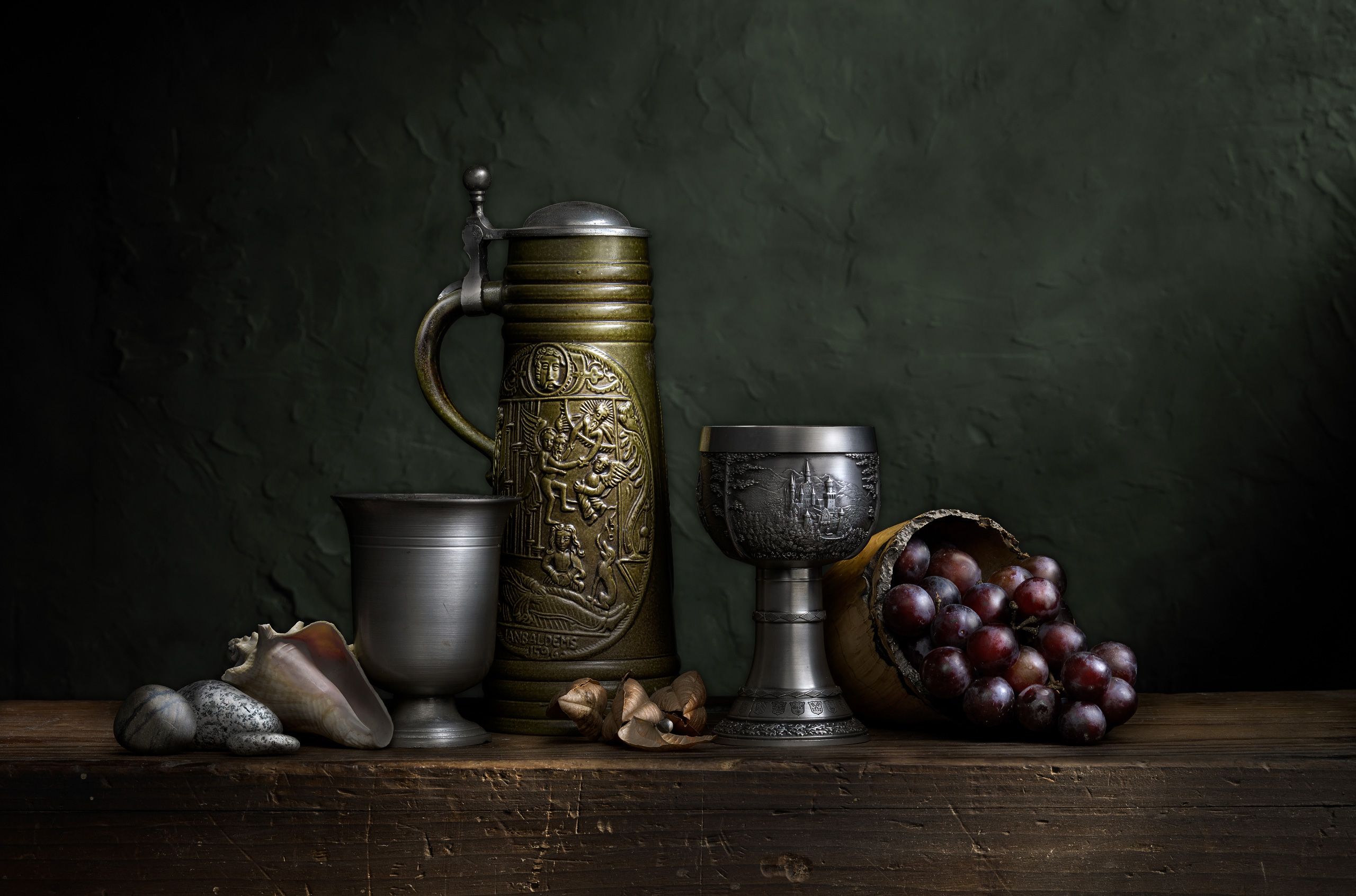History of Still Life
Still life is a work of art depicting mostly inanimate subject matter, typically commonplace objects which are either natural (food, flowers, dead animals, plants, rocks, shells, etc.) or man-made (drinking glasses, books, vases, jewelry, coins, pipes, etc.). The term ‘still life’ was coined in the Netherlands in the 17th century, but the practice itself dates back to ancient times, it began as an art form rather than photography. Some of the earliest still life artists were Giotto, Hans Memling, and Jacopo de Barbari who all helped to influence still life both in art and photography.

The earliest forms of still life dates back to Ancient Egypt and Rome. In Ancient Egypt, what is sometimes categorized as still life, may actually be more of a list of gifts as seen above. In Ancient Rome and Greece however, vegetables and game were painted as a way to depict pleasure and abundance. Throughout the 1000 years of the Middle Ages, all non-religious art largely ceased. Coins, fruits, etc were used to decorate the boarders of illuminated manuscripts and the same could be seen in small sections of religious paintings, but nothing that could truly be considered a still life in itself was created in this time.

Fast forward to the 1500s this painting was created (Still Life with Partridge and Gauntlets by Jacopo de’ Barbari) as seen above. Considering it wasn’t until the 1600s that the term ‘still life’ came to be, this painting is considered to be one of the first still life paintings. The Netherlands invested heavily in exotic flowers and in turn, in paintings of exotic flowers. While still lives were largely of food up until this point, flowers now came to be a prime subject. With the stock market crash of 1637, painters began to shift the symbolism of abundance and the vanitas came to be. The Dutch vanitas paintings were reminders that abundance was temporary and life was fleeting. We see this in depictions of skulls, dying flowers, rotten fruit and imperfect table settings.

With the invention of photography came a big step for still life, both in an art form and exploring new forms within photography, however most early photographs of still life maintained the same aesthetic used in art, like this image above which still has the stereotypical fruit and object placement of still life art.
As time has gone on and both photography and art have developed, still life has been explored in many different ways especially with the change of art trends such as abstract or modern art having an effect on still life some still life photos nowadays may only have one object or still many.

IMAGE ANALYSIS
The photo above is in colour and captures a variety of objects in a dimly lit room, the only light appears to be illuminating the objects on the table, which features cups shells and grapes, grapes being typically featured in still life images and symbolizing wealth because when still life first became popular grapes were considered a delicacy to eat. The objects are organized with the smallest ones on the outside and the biggest in the middle to draw the viewers eye in. The dark background also makes the gold and silver colours stand out. Shadows are being cast over the objects so the lighting is clearly not natural and must be from an overhead light.

Did you produce some still-life images in the studio in response to this research. If so, produce another blog posts showing your selection, editing and evaluating of best images